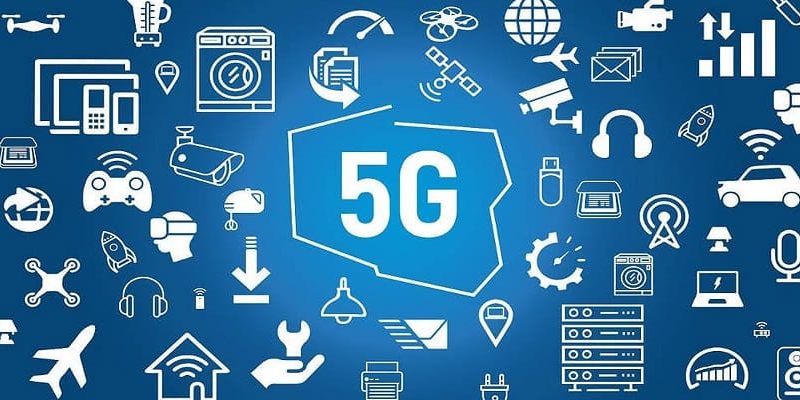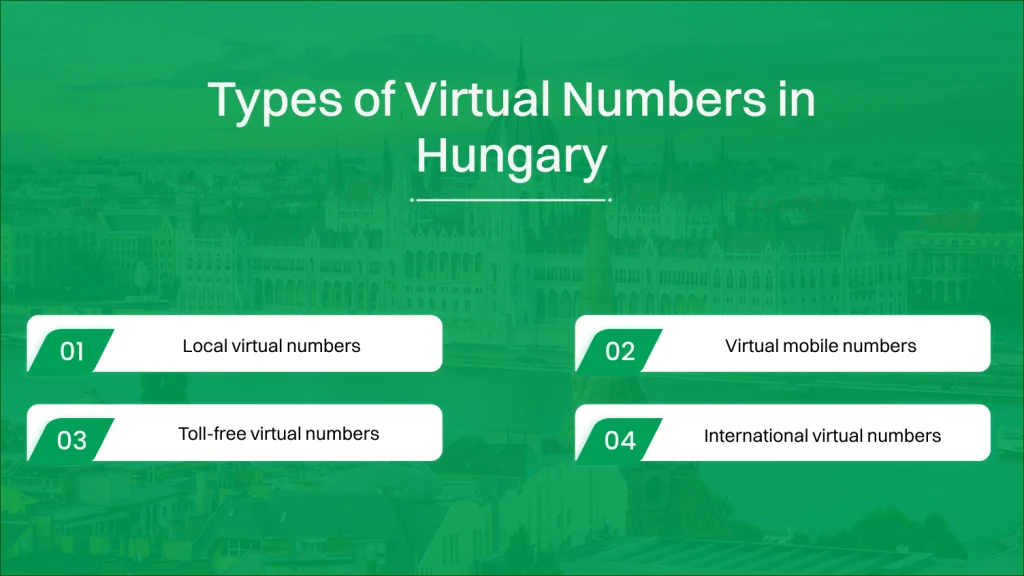In the last few decades, Mobile Wireless Communication networks have experienced a remarkable change. The mobile wireless Generation (G) generally refers to a change in the nature of the system, speed, technology, frequency, data capacity, latency, etc. Each generation has some standards, different capacities, new techniques and new features that differentiate it from the previous one.
The first generation (1G) mobile wireless communication network was analog used for voice calls only.
The second-generation (2G) is a digital technology and supports text messaging.
The third-generation (3G) mobile technology provided a higher data transmission rate, increased capacity and provide multimedia support.
The fourth-generation (4G) integrates 3G with fixed internet to support wireless mobile internet, which is an evolution to mobile technology and it overcame the limitations of 3G.
It also increased the bandwidth and reduced the cost of resources. 5G stands for 5th Generation Mobile technology and is going to be a new revolution in the mobile market with very high bandwidth.
5G performance targets high data rate, reduced latency, energy saving, cost reduction, higher system capacity, and massive device connectivity.
The first phase of 5G specifications will be completed by March 2019 to accommodate the early commercial deployment.
The second phase is due to be completed by March 2020 for submission to the International Telecommunication Union (ITU) as a candidate for IMT-2020 technology.
5G Evolution
Mobile communication has become more popular in the last few years due to fast reform from 1G to 5G in mobile technology.
This reform is due to the requirement of service compatible transmission technology and a spike in the subscriber base.
Generation refers to a change in the nature of service compatible transmission technology and new frequency bands.
In the 1980s the mobile cellular era had started, and since then mobile communications have undergone considerable changes and experienced massive growth.
- First Generation (1G) – This was the first mobile phone service to be commercially available, which was introduced in 1982. It was used for voice services and was based on a technology called Advanced Mobile Phone System (AMPS). The AMPS system was frequency modulated and used frequency division multiple access (FDMA) with a channel capacity of 30 kHz and a frequency band of 824- 894MHz. Its basic features included a speed of 2.4 kbps and supported voice calls. It employed analog signal processing with poor voice quality, poor battery life, unreliable handoff, limited capacity, and poor security. It offered a very low level of spectrum efficiency and required a large phone size.
- Second Generation (2G) – 2G refers to the second generation based on GSM which emerged in the late 1980s. It uses digital signals for voice transmission. The main focus of this technology was on digital signals and provides services to deliver text and picture messages at low speed (in kbps). The most common 2G technology was the time division multiple access (TDMA)-based GSM operating in the 900 MHz or 1800 MHz bands. It supported data speeds up to 64kbps. Next, to 2G, 2.5G system used a packet-switched and circuit-switched domain and provided data rate up to 144 kbps. (e.g. GPRS, CDMA, and EDGE).
- Third Generation (3G) – 3G is based on GSM and was launched in 2000. The aim of this technology was to offer high-speed data. The original technology was improved to allow data rates up to 14 Mbps and more using packet switching and operates at a range of 2100MHz and has a bandwidth of 15-20MHz used for high-speed internet services, video chatting, etc. 3G mobile system was called as UMTS(Universal Mobile Telecommunication System) in Europe, while CDMA2000 is the name of American 3G variant. WCDMA is the air-interface technology for UMTS.
- Fourth Generation (4G) – 4G offers a downloading speed of 100Mbps. It provides the same features as 3G and additional services like Multi-Media Newspapers, to watch T.V programs with more clarity and send data much faster than previous generations. As opposed to earlier generations, a 4G system does not support traditional circuit-switched telephony service, but all-Internet Protocol (IP) based communication such as IP telephony. 4G uses OFDMA multi-carrier transmission and other frequency-domain equalization (FDE) schemes, making it possible to transfer very high bit rates despite extensive multi-path radio propagation. The peak bit rate is further improved by smart antenna arrays for multiple-input-multiple-output (MIMO) communications.
5G: Envisaged System
5G Features
5G technology is envisaged to have the following features:-
| Ser | Capability | Description | 5G target |
| 1 | Peak data rate | Maximum achievable data rate | 20 Gbit/s |
| 2 | User experienced data rate | Achievable data rate across the coverage area | 1 Gbit/s |
| 3 | Latency | Radio network contribution to packet travel time | 1 ms |
| 4 | Mobility | Maximum speed for handoff and QoS requirements | 500 km/h |
| 5 | Connection density | Total number of devices per unit area | 106/km2 |
| 6 | Energy efficiency | Data sent/received per unit energy consumption (by device or network) | Equal to 4G |
| 7 | Spectrum efficiency | Throughput per unit wireless bandwidth and per network cell | 3–4x 4G |
| 8 | Area traffic capacity | Total traffic across the coverage area | 1000 (Mbit/s)/m2 |
Air Interface
5G New Radio (5G NR) is a completely new air interface being developed for 5G. It is being developed from scratch in order to support the wide variety of services, devices, and deployments that 5G will encompass, and across a diverse spectrum. However, it will build on established technologies to ensure backward.
Usage Scenario
ITU-R have defined three main types of usage scenario that the capability of 5G NR is expected to enable.
- Enhanced Mobile Broadband (eMBB) –Enhanced Mobile Broadband (eMBB) refers to the use case of using 5G as an evolution to 4G LTE mobile broadband services with faster connection with higher throughput and more capacity. 5G would need to deliver higher capacity, enhance connectivity and support higher user mobility.
- Ultra-Reliable Low Latency Communications (URLLC) – URLLC is a new service category in 5G to accommodate emerging services and applications having stringent latency and reliability requirements. In order to support URLLC, there should be both evolutionary and revolutionary changes in the air interface (5G NR).
- Massive Machine Type Communications (mMTC) – mMTC involves wireless connectivity to machine-type terminals. The main challenge in mMTC is scalability and efficient connectivity for a massive number of devices sending very short packets, which is not done adequately in cellular systems designed for human-type communications. Furthermore, mMTC solutions need to enable wide area coverage and deep indoor penetration while having low cost and being energy efficient.
Modes of Deployment
Initial 5G NR launches will depend on existing LTE 4G infrastructures in non-standalone (NSA) mode, before maturation of the standalone (SA) mode with the 5G core network.
- Non-Standalone Mode – Non-Standalone (NSA) mode of 5G NR refers to an option of 5G NR deployment that dependent on the control plane of the existing LTE network for control functions, while 5G NR exclusively focused on the user plane. The advantage of doing so is reported to speed up 5G adaption. However, some operators and vendors have criticized prioritizing the introduction of 5G NR NSA on the grounds that it could hinder the implementation of the standalone mode of the network.
- Standalone Mode – Standalone (SA) mode of 5G NR refers to using 5G cells for both signaling and information transfer. It includes the new 5G Packet Core architecture instead of relying on the 4G Evolved Package Core. It would allow the deployment of 5G without the LTE network. It is expected to have lower cost, better efficiency, and assist the development of new deployment.
Technology
1. Spectrum
In order to support increased throughput requirements of 5G, large quantities of the new spectrum (5G NR frequency bands) have been allocated to 5G, particularly in millimeter wave bands.
- Frequency Range 1 (< 6 GHz) – The maximum channel bandwidth defined for FR1 is 100 MHz. FR1 supports a maximum modulation format of 256-QAM while LTE has a maximum of 64-QAM, meaning 5G achieves significant throughput improvements relative to LTE in the sub-6 GHz bands. However, LTE-Advanced already uses 256-QAM, eliminating the advantage of 5G in FR1.
- Frequency Range 2 (24–86 GHz) –The maximum channel bandwidth defined for FR2 is 400 MHz, with two-channel aggregation. The maximum rate potentially supported by this configuration is approximately 40 Gbit/s. In Europe, 24.25–27.5 GHz is the proposed frequency range.
2. Massive MIMO
Massive MIMO (Multiple Input and Multiple Output) antennas increase sector throughput and capacity density using large numbers of antennae and Multi-user MIMO (MU-MIMO). Each antenna is individually-controlled and may embed radio transceiver components.
3. Multi-access Edge Computing (MEC)
Formerly called Mobile Edge Computing, it is a network architecture concept that enables cloud computing capabilities and an IT service environment at the edge of the cellular network and, more in general at the edge of any network.
The basic idea behind MEC is that by running applications and performing related processing tasks closer to the cellular customer, network congestion is reduced and applications perform better.
MEC technology is designed to be implemented at the cellular base stations or other edge nodes and enables flexible and rapid deployment of new applications and services for customers.
Combining elements of information technology and telecommunications networking, MEC also allows cellular operators to open their Radio Access Network (RAN) to authorized third-parties, such as application developers and content providers.
4. Small Cells
These are low-powered cellular radio access nodes that operate in the licensed and unlicensed spectrum that have a range of 10 meters to a few kilometers.
They are “small” compared to a mobile macrocell, partly because they have a shorter range and partly because they typically handle fewer concurrent calls or sessions.
They make the best use of the available spectrum by re-using the same frequencies many times within a geographical area.
Fewer new macro cell sites are being built, with larger numbers of small cells recognized as an important method of increasing cellular network capacity, quality and resilience with a growing focus using LTE Advanced and further in 5G.
5. Radio Convergence
One benefit of the transition to 5G is the convergence of multiple networking functions to achieve cost, power and complexity reductions. LTE has targeted convergence with Wi-Fi via various efforts, such as License Assisted Access (LAA) and LTE-WLAN Aggregation (LWA), but the differing capabilities of cellular and Wi-Fi have limited the scope of convergence.
However, significant improvement in cellular performance specifications in 5G, combined with migration from Distributed Radio Access Network (D-RAN) to Cloud- or Centralized-RAN (C-RAN) and rollout of cellular small cells can potentially narrow the gap between Wi-Fi and cellular networks in dense and indoor deployments.
Radio convergence could result in sharing ranging from the aggregation of cellular and Wi-Fi channels to the use of a single silicon device for multiple radio access technologies.
6. Non-Orthogonal Multiple Access (NOMA)
NOMA (Non-Orthogonal Multiple Access) is a proposed multiple access technique for 5G. In this, the same time, frequency and spreading-code resources are shared by multiple users via allocation of power.
The entire bandwidth can be exploited by each user in NOMA for entire communication time due to which latency has been reduced and users’ data rates can be increased.
For multiple access, the power domain has been used by NOMA in which different power levels are used to serve different users. NOMA is used in LTE-Advanced due to its spectral efficiency and is known as Multi-User Superposition Transmission (MUST).
7. Software-Defined Networking (SDN).
This technology is an approach to cloud computing that facilitates network management and enables programmatically efficient network configuration in order to improve network performance and monitoring.
SDN is meant to address the fact that the static architecture of traditional networks is decentralized and complex while current networks require more flexibility and easy troubleshooting.
SDN suggests to centralized network intelligence in one network component by disassociating the forwarding process of network packets (data plane) from the routing process (control plane).
The control plane consists of one or more controllers which are considered as the brain of the SDN network where the whole intelligence is incorporated.
However, intelligence centralization has its own drawbacks when it comes to security, scalability, and elasticity and this is the main problem of SDN.
8. Network Functions Virtualization (NFV)
It is a network architecture concept that uses the technologies of IT virtualization to virtualize entire classes of network node functions into building blocks that may connect or chain together to create communication services.
NFV relies upon but differs from traditional server-virtualization techniques such as those used in enterprise IT. A virtualized network function may consist of one or more virtual machines running different software and processes on top of standard high-volume servers, switches and storage devices or even cloud computing infrastructure instead of having custom hardware appliances for each network function.
Challenges
- Inter-cell Interference – In the envisaged 5G NR, there are variations in the size of traditional macro cells and concurrent small cells that will lead to interference. This is one of the major technical issues that need to be solved.
- Efficient Medium Access Control – In a situation where the dense deployment of access points and user terminals are required, the user throughput will be low, latency will be high and hotspots will not be competent to cellular technology to provide high throughput. Researchers are working on this to optimize the technology.
- Traffic Management – In comparison to the traditional human to human traffic in cellular networks, a great number of Machine to Machine (M2M) devices in a cell may cause serious system challenges i.e. radio access network (RAN) challenges, which will cause overload and congestion.
- Huge Data Volume – As technology advances, the data volume of each network also increases every year and the trend is growing. Each network has to support a huge volume of data since many applications are capable of high-resolution video calling, live streaming, downloading, etc. The new media trend is towards video standard and there is a huge demand for video content compared to conventional text form. Multimedia gaming, Augmented Reality (AR) and Virtual Reality (VR) applications need a high-speed network for better user experience.
- Multiple Services – Unlike other radio signal services, 5G would have a huge task to offer services to heterogeneous networks, technologies, and devices operating in different geographic regions. The challenge is of standardization to provide dynamic, universal, user-centric and data-rich wireless services to fulfill the high expectations of people.
- Infrastructure – Researchers are facing technological challenges of standardization and application of 5G services.
- Communication, Navigation, & Sensing – These services largely depend upon the availability of radio spectrum through which signals are transmitted. Though 5G technology has a strong computational power to process the huge volume of data coming from different and distinct sources, it needs larger infrastructure support.
- Security and Privacy – This is one of the most important challenges that 5G needs to ensure the protection of personal data. 5G will have to define the uncertainties related to security threats including trust, privacy, and cybersecurity, which are growing across the globe.
- Legislation of Cyber Law – Cybercrime and other fraud may also increase with the high speed and ubiquitous 5G technology. Therefore, the legislation of the Cyberlaw is also an imperative issue, which largely is governmental and political (national as well as an international issue) in nature.
Conclusion About 5G
5G technology undoubtedly will bring about a revolution in the communication world. The envisaged system which is offering unprecedented speed, reliability, and quality of service is however under development stage.
Also Read,
- {Mega Deals} Black Friday & Cyber Monday Deals 2019 (Save up to 90%)
- The Best Web Hosting Black Friday Deals
- Bluehost Black Friday Deals
- A2Hosting Black Friday Deals
- HostGator Black Friday Deals
A lot of technical and infrastructural issues need to be solved and new technologies or optimization of existing ones needs to be carried out for efficient deployment of the system. Research is underway and the system is expected to roll out by 2020-21.









